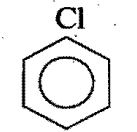Physics-
General
Easy
Question
The coefficient of friction between blocks of mass m and 2m is m = 2 tan q. There is no friction between block of mass 2m and inclined plane. The maximum amplitude of two block system for which there is no relative motion between the blocks.




- None of these
The correct answer is: 
Related Questions to study
Physics-
For a particle executing SHM the displacement x given by x = Acoswt. Identify the graph which represents the variation of potential energy (PE) as a function of time t and displacement x :-

For a particle executing SHM the displacement x given by x = Acoswt. Identify the graph which represents the variation of potential energy (PE) as a function of time t and displacement x :-

Physics-General
Chemistry-
Order of stability of vinyl, allyl and tertiary radical is: .
Order of stability of vinyl, allyl and tertiary radical is: .
Chemistry-General
Chemistry-
Which of the following is electron deficient molecule?
Which of the following is electron deficient molecule?
Chemistry-General
Maths-
 =
=
 =
=
Maths-General
Chemistry-
Strength of acidity is in order:
I) 
II) 
III) 
IV) 
Strength of acidity is in order:
I) 
II) 
III) 
IV) 
Chemistry-General
Chemistry-
The, decreasing order of nucleophilicity' among the nucleophiles is
I) 
II) 
III) 
IV) 
The, decreasing order of nucleophilicity' among the nucleophiles is
I) 
II) 
III) 
IV) 
Chemistry-General
Chemistry-
Identify the correct order of boiling points of the following compounds:
1) 
2) 
3) 
Identify the correct order of boiling points of the following compounds:
1) 
2) 
3) 
Chemistry-General
Chemistry-
Identify the correct order of reactivity in electrophilic substitution reactions of the following compounds
1) 
2) 
3) 
4) 
Identify the correct order of reactivity in electrophilic substitution reactions of the following compounds
1) 
2) 
3) 
4) 
Chemistry-General
Maths-
If y = (1+ then
then  =
=
If y = (1+ then
then  =
=
Maths-General
Physics-
The stopping potential as a function of the frequency of the incident radiation is plotted for two different photoelectric surfaces A and B. The graphs show that work function of A is

The stopping potential as a function of the frequency of the incident radiation is plotted for two different photoelectric surfaces A and B. The graphs show that work function of A is

Physics-General
Physics-
In an experiment on photoelectric effect the frequency f of the incident light is plotted against the stopping potential  . The work function of the photoelectric surface is given by (e is electronic charge)
. The work function of the photoelectric surface is given by (e is electronic charge)

In an experiment on photoelectric effect the frequency f of the incident light is plotted against the stopping potential  . The work function of the photoelectric surface is given by (e is electronic charge)
. The work function of the photoelectric surface is given by (e is electronic charge)

Physics-General
Physics-
The stopping potential V for photoelectric emission from a metal surface is plotted along Y-axis and frequency n of incident light along X-axis. A straight line is obtained as shown. Planck's constant is given by

The stopping potential V for photoelectric emission from a metal surface is plotted along Y-axis and frequency n of incident light along X-axis. A straight line is obtained as shown. Planck's constant is given by

Physics-General
Physics-
For the photoelectric effect, the maximum kinetic energy  of the emitted photoelectrons is plotted against the frequency n of the incident photons as shown in the figure. The slope of the curve gives
of the emitted photoelectrons is plotted against the frequency n of the incident photons as shown in the figure. The slope of the curve gives

For the photoelectric effect, the maximum kinetic energy  of the emitted photoelectrons is plotted against the frequency n of the incident photons as shown in the figure. The slope of the curve gives
of the emitted photoelectrons is plotted against the frequency n of the incident photons as shown in the figure. The slope of the curve gives

Physics-General
Physics-
The figure shows the variation of photocurrent with anode potential for a photo-sensitive surface for three different radiations. Let  and
and  be the intensities and
be the intensities and  and
and  be the frequencies for the curves a, b and c respectively
be the frequencies for the curves a, b and c respectively

The figure shows the variation of photocurrent with anode potential for a photo-sensitive surface for three different radiations. Let  and
and  be the intensities and
be the intensities and  and
and  be the frequencies for the curves a, b and c respectively
be the frequencies for the curves a, b and c respectively

Physics-General
Physics-
In the following arrangement y = 1.0 mm, d= 0.24 mm and D = 1.2 m. The work function of the material of the emitter is 2.2 eV. The stopping potential V needed to stop the photo current will be

In the following arrangement y = 1.0 mm, d= 0.24 mm and D = 1.2 m. The work function of the material of the emitter is 2.2 eV. The stopping potential V needed to stop the photo current will be

Physics-General





